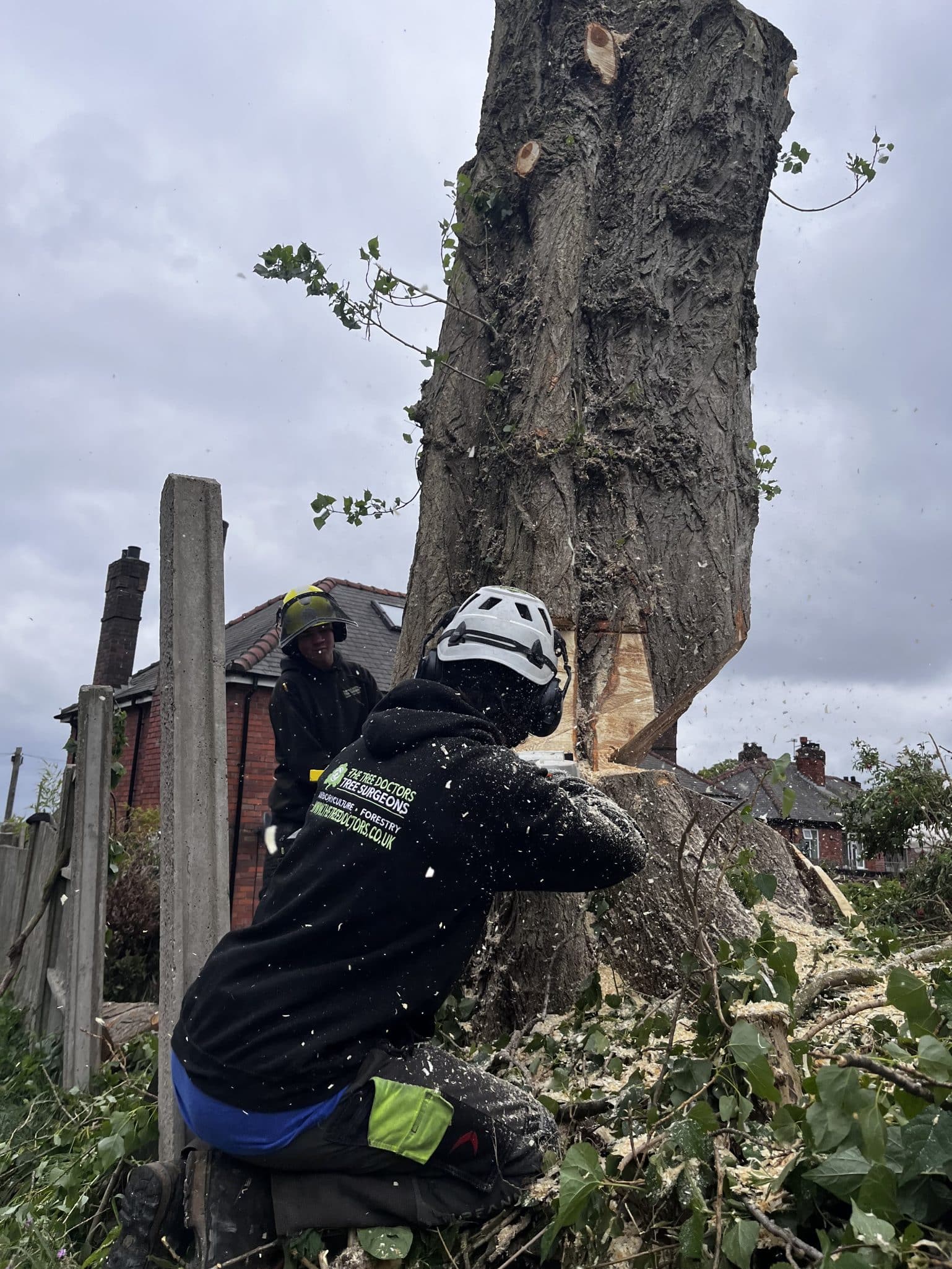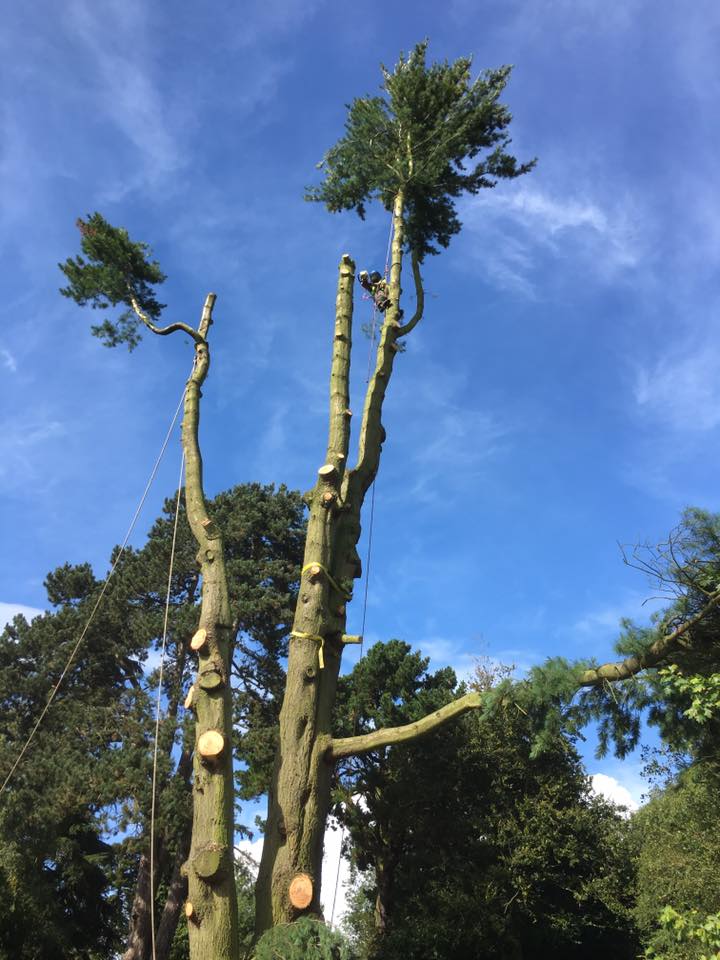To get your FREE quote, click HERE to fill out a contact form
Tree Felling: Why Do We Do It?
While trees are vital to our planet, responsible tree felling can play a crucial role in forest health. Whether it's for sustainable timber harvesting, protecting trees and people, or creating new habitats, it can be a positive step.
Our team of Tree Surgeons possess the expertise and awareness to successfully fell a tree cleanly in a safe working environment. As trees are often located in awkward positions near buildings or in areas of vegetation we are careful to avoid causing any disruption to the surrounding area. There are some key reasons as to why our specialised tree surgeons would have no option but to fell a tree.
- The tree may be dead, dangerous or diseased, causing danger to the area and vegetation around it.
- The root may not have room to grow.
- The tree may be restricting views or taking up unwanted space.
- Trees at risk of falling if a storm hits may need felling.
To complete the tree felling process we can remove the stump using our stump grinding equipment so no visible trace of the tree remains.
Contact Us

Alternatives to Tree Felling: Tree Reductions
Felling a tree should always be a last resort, as it impacts both people and wildlife. However, when a tree poses a safety risk due to its location or condition or is damaging property, removal may be necessary. Even in these cases, consider less drastic options like pollarding or pruning to reduce the tree's impact without felling it.
Our tree felling contractors are continuously on the lookout to preserve trees and tree reductions are a key component of this. Tree reductions usually involve the removal of branches to allow more light into a given area or removing overhanding large branches that pose a threat during stormy weather.
If the tree has to be reduced below a certain level then that is when The Tree Doctors may consider felling. When contacting us, we'll happily discuss the options and the best solution for the tree's location and impact on the surroundings.
Tree reduction offers a variety of benefits for both the health of your tree and the safety of your property.
- By carefully removing a portion of the branches, we can promote better light penetration, encouraging healthier growth throughout the tree.
- This reduction also helps to lessen the wind resistance on the tree, reducing the risk of branch failure during storms and protecting your home and other structures.
- Tree reduction can improve clearance for walkways, driveways, and power lines, creating a safer environment for everyone.
Types of Tree Reductions
Crown Thinning
Crown Lift or Crown Raising
Crown Reduction
Crown reductions involve reducing the height and/or spread of a tree's canopy (the foliage-bearing parts). This technique can be used to lessen mechanical stress on specific branches or the entire tree, make the tree better suited to its environment, or reduce shading and light loss. The goal of crown reduction is to maintain the tree's main structure and preserve a significant portion of the leaf-bearing branches, resulting in a smaller but similar outline. Achieving perfect symmetry is not always necessary.

FAQs on Tree Felling & Reductions
We won’t remove trees if there are birds nesting in them. So long as the nest is in use, we will not fell trees, but wait until nesting season is over.
As long as you own the property, you can remove the trees within it or hanging over the borders of it; however, it’s important to check whether the tree is protected by a tree preservation order (TPO). As professional tree surgeons, we’re familiar with the tree laws and what can be removed. Book a survey with us today to discuss your needs.
Crown thinning is a technique that improves a tree's health and appearance by selectively removing branches. This allows more sunlight to reach the interior of the crown, promoting healthy growth throughout the tree.
Here's how it works: we strategically remove up to 30% of the branches, focusing primarily on dead, diseased, or congested shoots. It's important to note that crown thinning requires a delicate touch. Removing too much too quickly can negatively impact the tree's aesthetics.
Pollarding is a pruning technique where the branches of a tree are cut back to stumps, typically near the trunk. This practice encourages the growth of new, vigorous shoots, resulting in a distinctive, rounded shape.
